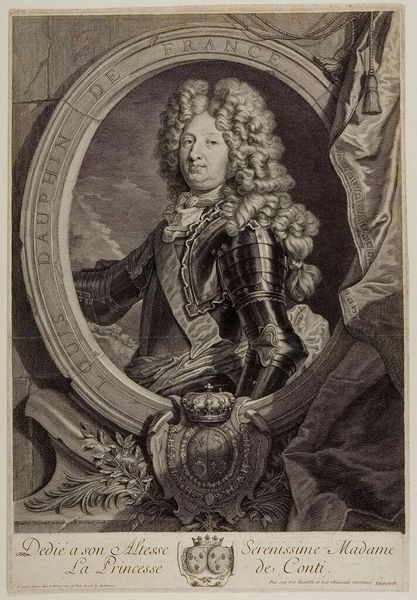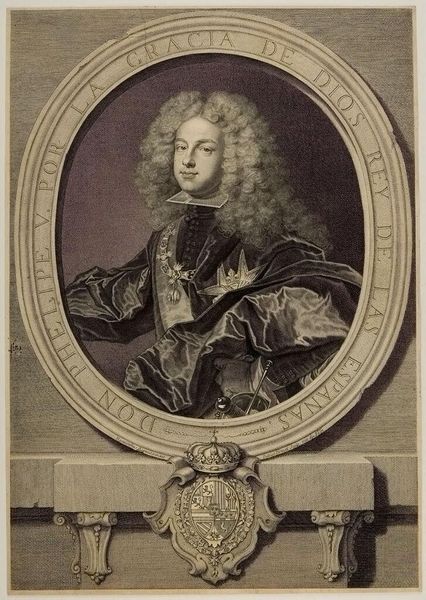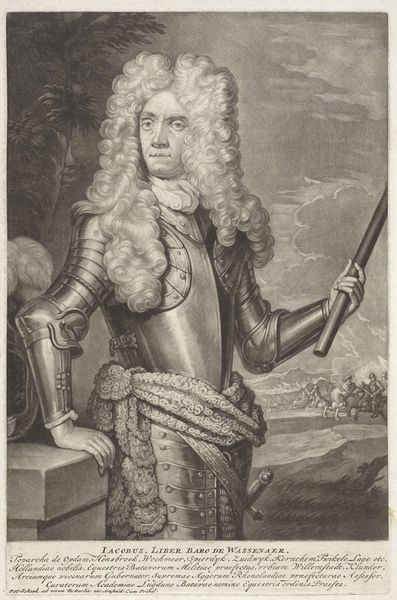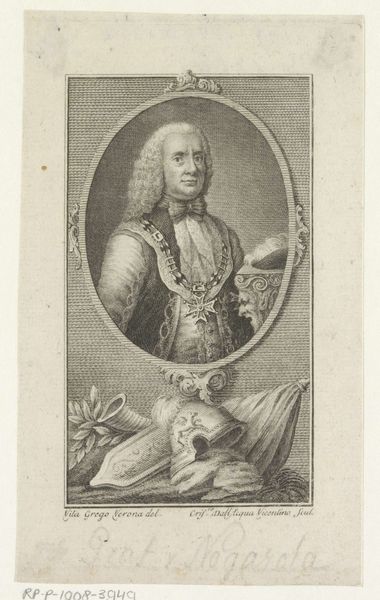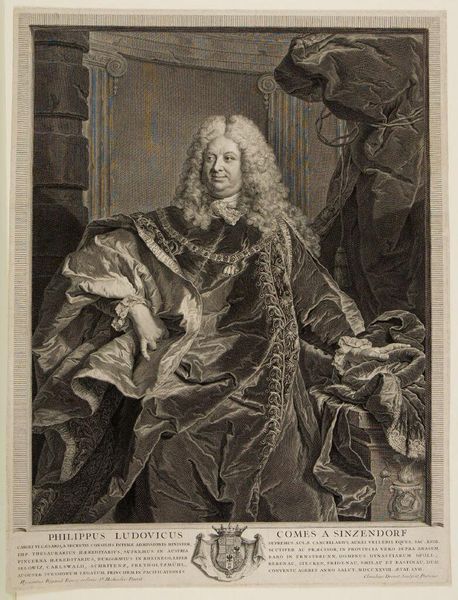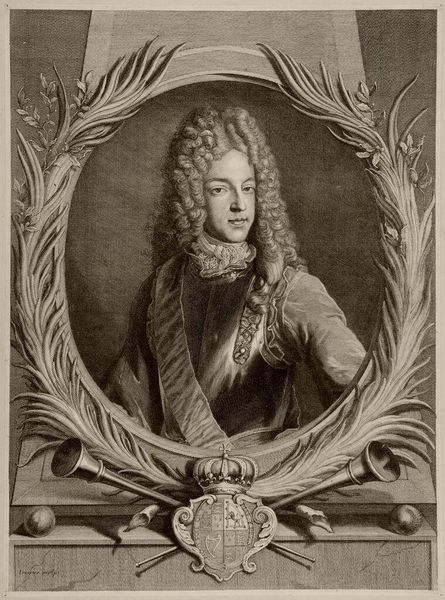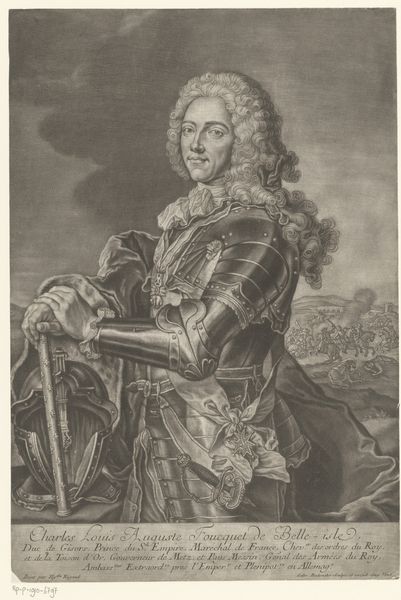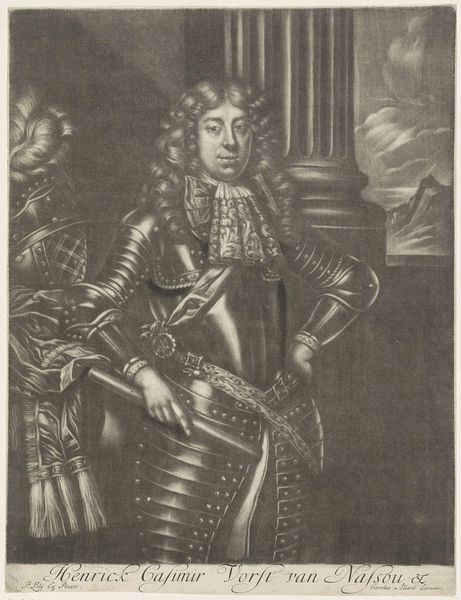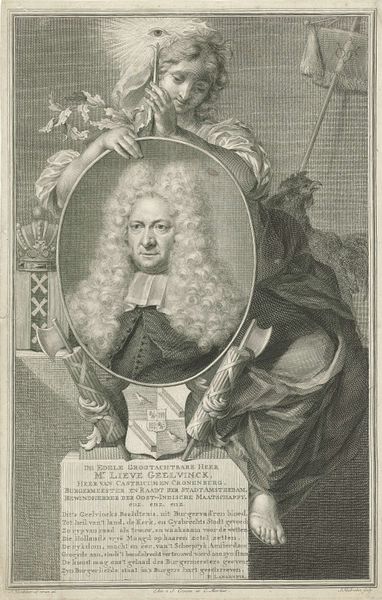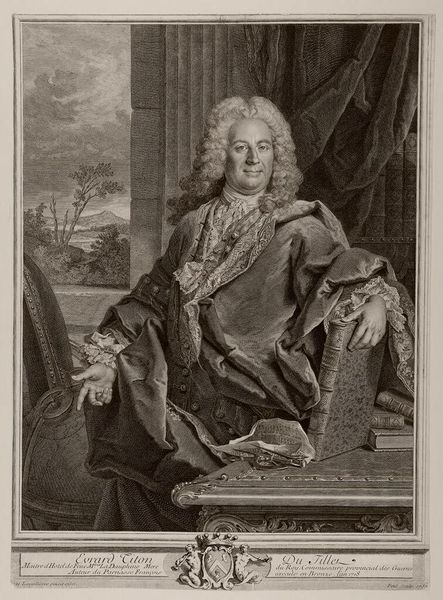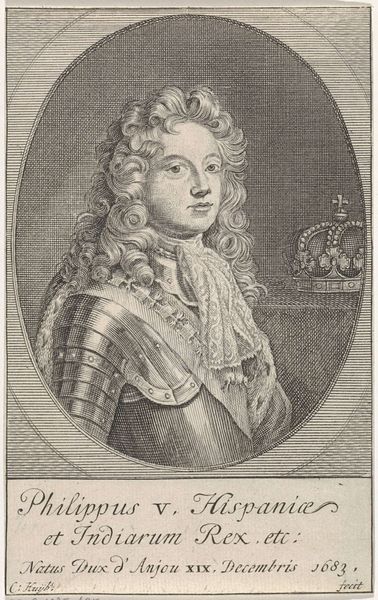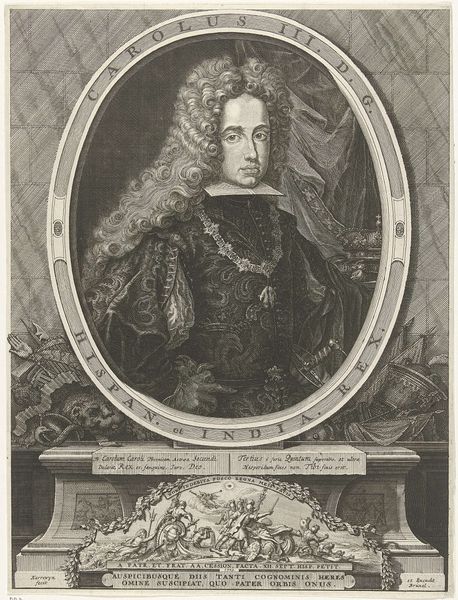
print, engraving
#
portrait
#
baroque
# print
#
charcoal drawing
#
history-painting
#
engraving
Dimensions: height 558 mm, width 458 mm
Copyright: Rijks Museum: Open Domain
Curator: Standing before us is "Staatsieportret van Friedrich I van Pruisen," a print dating from 1701-1713 currently held at the Rijksmuseum. Editor: It has a regal if somewhat melancholic air, don’t you think? The stark contrasts create a weighty presence. It's somber yet ornate. Curator: Absolutely. The composition uses Baroque dynamism to convey authority, with Friedrich centrally placed, surrounded by symbols of power. The use of line is impeccable in articulating the lavish details of his attire. Semiotically, it declares kingship. Editor: While the artistic flourish is obvious, it’s difficult not to consider the labor involved in both creating the artwork and manufacturing the king’s regalia. The mines providing the metals for his armor, the textile mills for his robes... all invisible here but integral to the portrait's existence. And the creation of an engraving or charcoal drawing would have demanded an incredible amount of time! Curator: A vital point. The textures are fascinating, from the smooth sheen of the armor to the softness of the fur stole. The artist has masterfully captured a range of tactile sensations through purely visual means. The structural layering pulls one's eyes towards Friedrich's calm gaze, creating an intersection between tangible symbols of authority and internal power. Editor: Yes, but at what human cost were these textures and layers achieved? The luxury presented hides the material realities behind its creation—the artisans involved in creating each intricate piece. How might a consideration of social context add to an understanding of history? Curator: Undoubtedly, considering social dynamics is crucial. The artwork invites us to see more deeply into not only royal aesthetics and aristocratic dominance, but how social forces interplay within artistic expression. Editor: It's quite striking to consider the contrast between visibility and invisibility. This artwork showcases the figure of authority but obfuscates the lives of many behind his throne. Curator: Ultimately, both material origins and semiotic complexity serve to deepen our grasp of art's ability to crystallize broader ideological currents in discrete compositions. Editor: And I'd add, considering its origins, to examine the networks of people and labor, hidden in plain sight. Both analyses seem invaluable for an expanded portrait of Prussian identity.
Comments
No comments
Be the first to comment and join the conversation on the ultimate creative platform.
